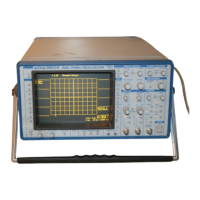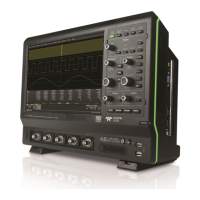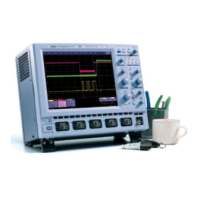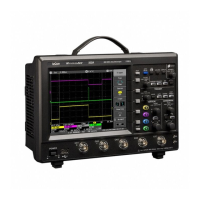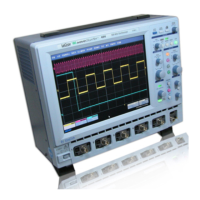System Commands
I
I
FUNCTION
DESCRIPTION
COMMAND SYNTAX
:l: 4-channel oscilloscopes only
88
FUNCTION_STATE, FSTA :[:
Command/Query
The FUNCTION_STATE command allows the user to control or
enquire how Functions C, D, E and F are being used. The four
waveform processing functions may assume up to three different
states:
MEM static memory of a waveform (no further automatic pro-
cessing occurs)
ZOOM
expansion of another waveform (updated as the source
changes)
FUNC
a mathematical function of one or two other waveforms
(updated if one of the sources change)
The two Functions C and D may assume all three states whereas E
and F may assume only the states MEM and FUNC. The setup
information needed to execute expansions or mathematical wave-
form processing is memorized separately by the oscilloscope for
each function. When the state of a function is changed, the last
setup information associated with the new state will be reactivated.
There are three other commands which may cause a state transi-
tion. The command ZOOM applied to Functions C or D will
automatically switch them into zoom state. The commands
STORE (storage from internal waveform) and WAVEFORM
(storage from external waveform) applied to any one of the Func-
tions C, D, E or F will automatically switch them into the memory
state. There is never an automatic transition into the function
state. The command FUNCTION_STATE must be used.
Initially Functions C and D are set to the memory state and Func-
tions E and F are set to the function state.
The query FUNCTION STATE returns the current state of a
waveform processing function.
<function>: Function_STAte <state>
<function> := {MC, MD, FE, FF}
<state> := {FUNC, MEM, ZOOM}
I
I
I
I
I
I
I
I
I
I
I
I
i
I
I
I
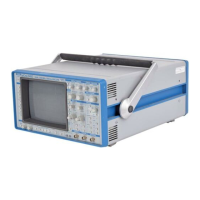
